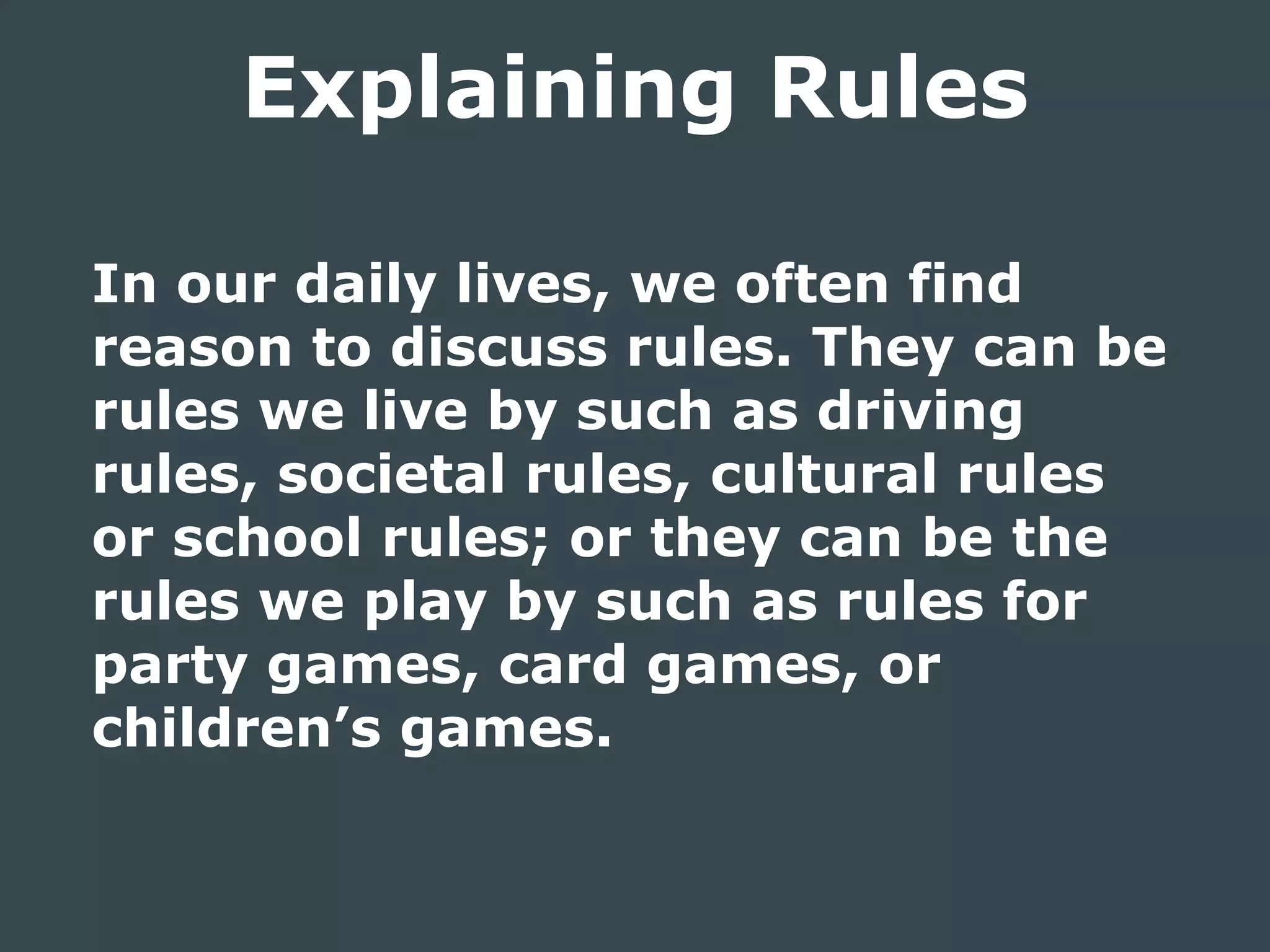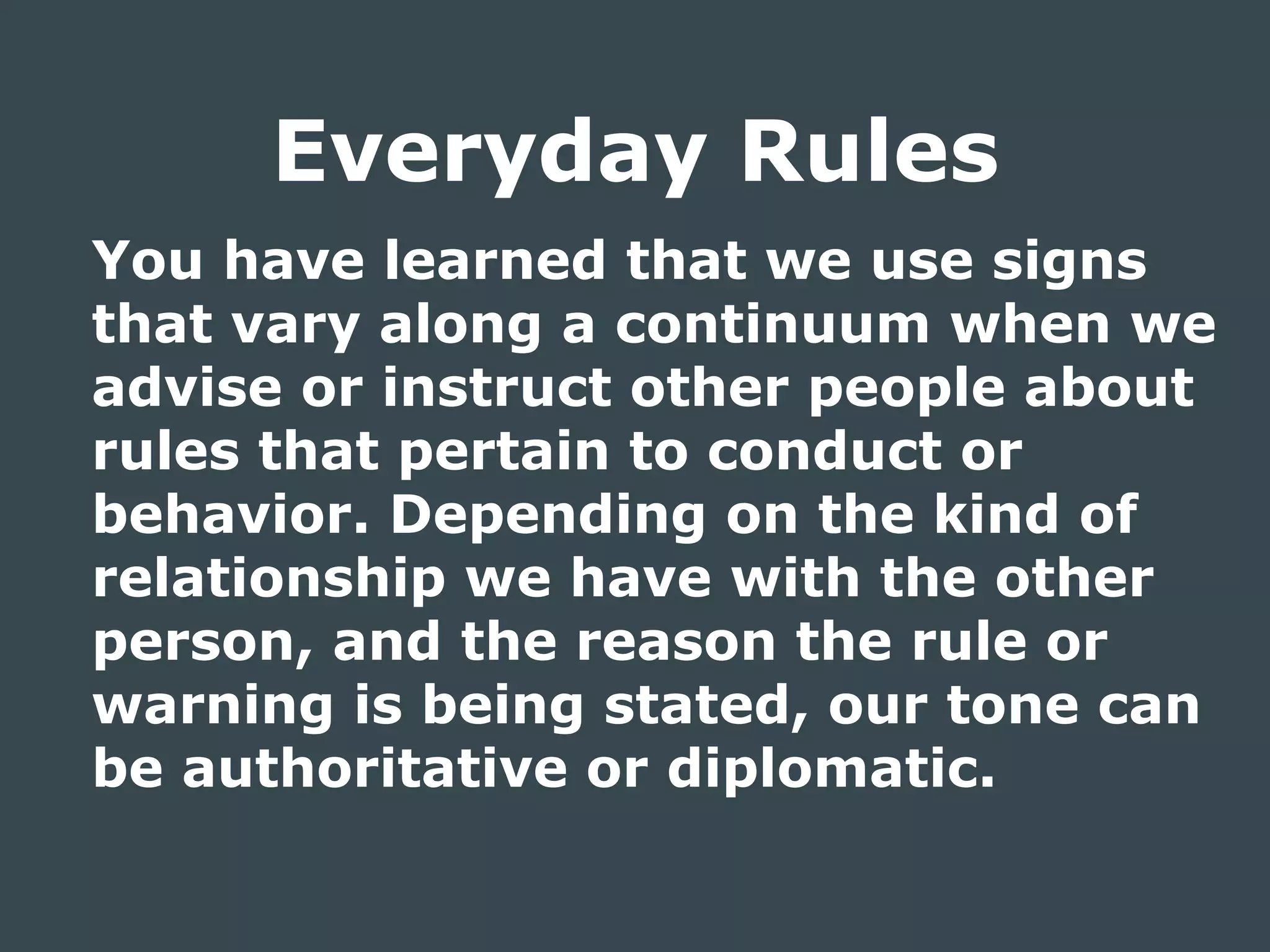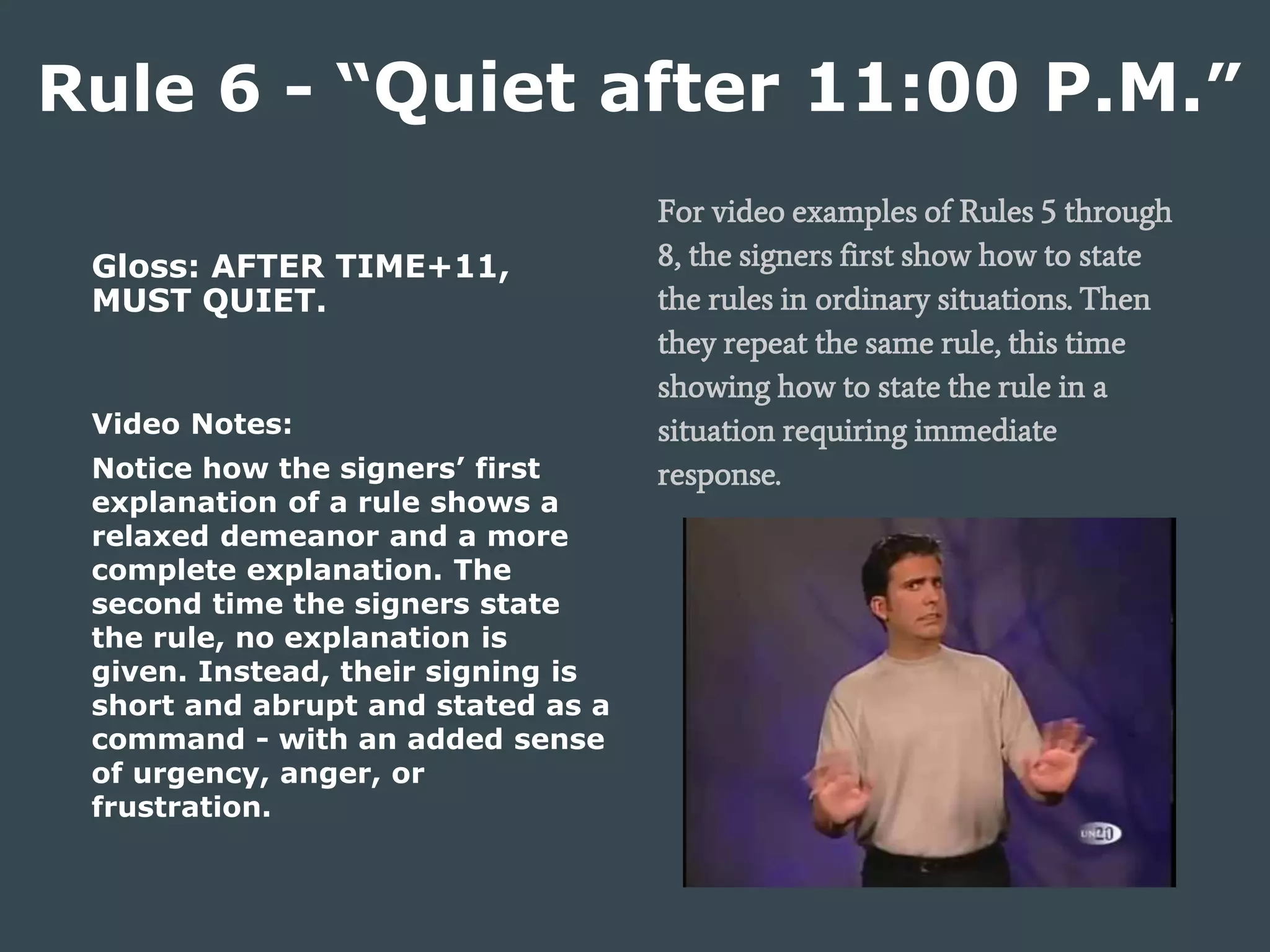This document discusses explaining rules through American Sign Language (ASL). It covers explaining everyday rules through ASL by providing the situation and then explaining the rule. The document also discusses how to explain rules in both an authoritative or diplomatic tone depending on the relationship and context. Additionally, it addresses situations requiring immediate responses, where the signs used to explain the rule should be brief, abrupt and accompanied by facial expressions showing urgency, frustration or anger. Examples are provided to demonstrate explaining rules in both everyday and immediate response situations.




![Use these signs to tell a person what she/he should do.
authoritative [-----------------] diplomatic
NEED/SHOULD
BEST
used if you don’t have any other choice used if you have other
Everyday Rules](https://image.slidesharecdn.com/3c-160111205615/75/3c-Explaining-Rules-Everyday-Rules-5-2048.jpg)
![Use these signs to tell a person what she/he should not do.
authoritative [-----------------] diplomatic
FORBIDDEN NOT PERMITTED DON’T SHAKE HAND
All four signs mean that something is not allowed. Choose the sign that fits
the relationship you have with the person and fits the situation. Your choice
should reflect the degree of directness and the amount of authority you are
comfortable using.
Everyday Rules](https://image.slidesharecdn.com/3c-160111205615/75/3c-Explaining-Rules-Everyday-Rules-6-2048.jpg)







